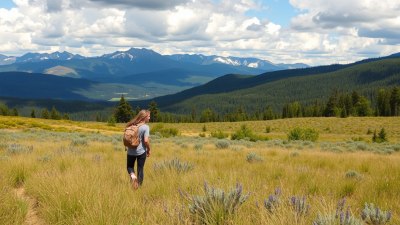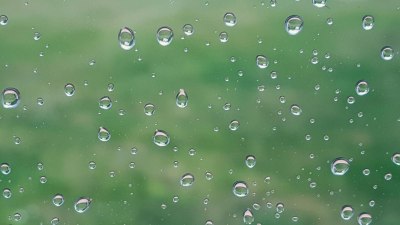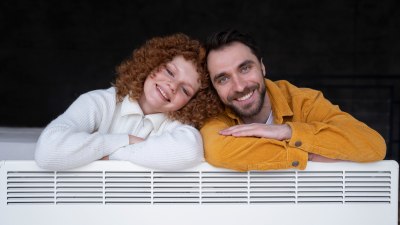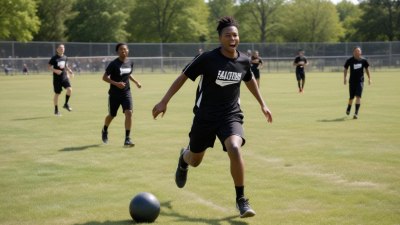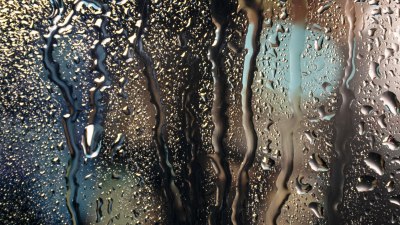How to Spot Heat Exhaustion Before It's Too Late
Learn to recognize early signs of heat exhaustion and protect yourself from heat-related illnesses with these practical tips.

Image by drazenzigic on Freepik
Heat exhaustion is a serious condition that can develop after prolonged exposure to high temperatures, especially when combined with high humidity and strenuous physical activity. Recognizing the symptoms early is crucial to preventing the progression to heat stroke, a potentially life-threatening emergency. This article covers how to spot heat exhaustion before it's too late, common risk factors, symptoms, treatment options, and preventive measures.
Understanding Heat Exhaustion
Heat exhaustion occurs when the body’s cooling mechanisms become overwhelmed, leading to dehydration and an imbalance in electrolytes. The body loses excessive water and salt through sweating, and if fluids aren't replaced, the system starts to fail. Unlike heat stroke, heat exhaustion does not immediately cause irreversible organ damage, but if left untreated, it can escalate rapidly.
Common causes include exposure to hot, humid environments while performing physical activities such as sports, outdoor labor, or even prolonged standing in the heat. Vulnerable populations include the elderly, young children, people with chronic illnesses, and individuals taking certain medications.
Risk Factors for Heat Exhaustion
Several factors increase the likelihood of heat exhaustion. Understanding these can help you identify potential situations or individuals at risk:
- High Environmental Temperatures: Extended periods in hot weather or poorly ventilated indoor areas.
- Humidity: High humidity reduces the evaporation rate of sweat, impairing the body’s ability to cool.
- Physical Exertion: Intense exercise or manual labor raises body temperature.
- Dehydration: Insufficient fluid intake before or during heat exposure.
- Clothing: Wearing heavy or non-breathable fabrics that trap heat.
- Age and Health Conditions: Children, older adults, or those with cardiovascular, respiratory, or kidney diseases.
- Medications: Diuretics, antihistamines, beta-blockers, and certain psychiatric medications can reduce the body’s heat tolerance or impair sweating.
Recognizing Early Symptoms
Knowing what to look for can allow individuals or caregivers to intervene early. Symptoms of heat exhaustion typically develop gradually and may include:
- Excessive Sweating: The body attempts to cool itself, leading to heavy perspiration.
- Cold, Pale, and Clammy Skin: Unlike heat stroke, the skin remains moist.
- Weakness and Fatigue: A feeling of being worn out and tired.
- Dizziness or Lightheadedness: Caused by dehydration and low blood pressure.
- Headache: Often mild but persistent.
- Nausea or Vomiting: The digestive system may become upset.
- Muscle Cramps: Painful contractions due to electrolyte imbalances.
- Rapid Heartbeat: The heart works harder as blood vessels dilate.
- Fainting or Near Fainting: Loss of consciousness or feeling like one might pass out.
It's important to note that some symptoms overlap with other conditions, so always consider the context of heat exposure.
Distinguishing Heat Exhaustion from Heat Stroke
Heat stroke is a medical emergency and requires immediate intervention. To distinguish between the two:
- Heat exhaustion victims usually remain conscious, whereas heat stroke patients may lose consciousness.
- Heat exhaustion skin is clammy and moist; heat stroke skin may be hot and dry.
- Body temperature in heat exhaustion is elevated but less than 104°F (40°C); heat stroke generally features body temperatures exceeding 104°F.
If you suspect heat stroke, call emergency services immediately.
How to Respond if You Suspect Heat Exhaustion
Immediate action can prevent deterioration. Follow these steps:
- Move to a Cooler Location: Find shade or an air-conditioned environment.
- Rest: Avoid further physical exertion.
- Hydrate: Drink cool water or electrolyte-replenishing beverages slowly but steadily.
- Loosen Clothing: Remove or loosen tight or heavy garments.
- Cool the Body: Apply cool, wet cloths to the skin or use a fan to facilitate evaporation.
If symptoms worsen or fail to improve within an hour, seek medical attention immediately. Avoid giving fluids if the person is vomiting continuously or is unconscious.
Prevention Strategies
Taking proactive measures is vital to prevent heat exhaustion, especially during heat waves or outdoor activities:
- Stay Hydrated: Drink plenty of water throughout the day, even if you do not feel thirsty. Avoid alcohol and caffeine as they can promote dehydration.
- Wear Appropriate Clothing: Choose lightweight, light-colored, and breathable fabrics.
- Limit Sun Exposure: Avoid outdoor activities during peak heat hours between 10 a.m. and 4 p.m.
- Take Frequent Breaks: Rest in shaded or cool areas when working or exercising in heat.
- Acclimate Gradually: Allow your body time to adjust to hot environments over several days.
- Use Fans and Air Conditioning: Indoor cooling significantly reduces heat stress.
- Monitor Vulnerable Individuals: Check on children, elderly relatives, and people with chronic illnesses.
The Role of Electrolytes
When sweating, the body loses not just water but also essential electrolytes like sodium, potassium, and magnesium. Maintaining a proper balance supports muscle function and prevents cramps and fatigue. Sports drinks contain these minerals but should be consumed in moderation due to sugar content. Natural alternatives include coconut water and balanced meals with fruits and vegetables that replenish salts.
When to Seek Medical Attention
If the person exhibits any of the following, professional medical care is critical:
- Confusion, agitation, or difficulty speaking
- Loss of consciousness or seizures
- High fever above 104°F (40°C)
- Persistent vomiting or diarrhea
- Rapid breathing or worsening symptoms despite initial home care
Emergency services can provide intravenous fluids, cooling treatments, and monitor for complications.
Common Myths About Heat Exhaustion
Misunderstandings can delay treatment or increase risks. Clarifying these myths helps improve preparedness:
- Myth: You Must Stop Sweating to Have Heat Exhaustion. Reality: Heavy sweating is a hallmark symptom; cessation of sweat may indicate transition to heat stroke.
- Myth: Only Outdoor Workers are at Risk. Reality: Indoor heat exposure, poorly ventilated rooms, and high humidity can cause heat exhaustion.
- Myth: Drinking Alcohol Helps Cool the Body. Reality: Alcohol dehydrates and impairs judgment, increasing the risk.
Heat Exhaustion in Different Weather Conditions
While hot, sunny days pose the biggest risk, heat exhaustion can also develop during less obvious conditions such as:
- High Humidity: Limits sweat evaporation so the body can’t cool efficiently.
- Heat Waves: Successive hot days can deplete the body’s reserves.
- Hot Nighttime Temperatures: Prevent proper recovery and exacerbate heat stress.
- High Altitude Heat Exposure: Increased UV exposure and exertion may raise risk.
Additional Protective Measures
Other helpful tips include:
- Use Sunscreen: Sunburn impairs the skin’s ability to cool.
- Stay Informed: Monitor local heat advisories and plan activities accordingly.
- Educate Pet Owners: Heat exhaustion can affect animals too; provide shade and water.
Overall, awareness and preparation are your best defense.
Identifying the early signs of heat exhaustion can save lives by allowing timely intervention. By understanding risk factors, symptoms, and preventive actions, individuals can enjoy warm weather safely and reduce the risk of heat-related illnesses. Stay hydrated, dress appropriately, seek shade, and take heat warnings seriously. If you or someone near you begins showing symptoms, respond promptly to prevent progression towards heat stroke and ensure access to medical help when needed.
